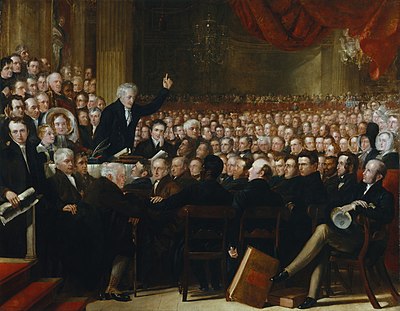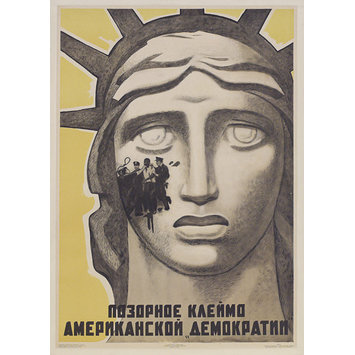This past summer the first annual Untold History Institute was held in New York City. The event was attended by mostly secondary educators from multiple states. I had the honor of leading a workshop that weekend on Globalizing US History. The institute coincided with Untold History’s release in Brazil this July. Having lived there for 6 years, I can easily imagine what book stores in Sao Paulo and Rio de Janeiro would be featuring the text. But I digress… In addition to the workshops, Oliver Stone attended a viewing of an episode of the multi-volume documentary. Following the airing, Mr. Stone along with Dr. Peter Kuznick and myself took part in a panel discussion and Q and A session with the audience moderated by former NCSS President and current state Social Studies Consultant for Connecticut Stephen Armstrong.
Incidentally, the documentary series is excellent. I especially enjoy the later episodes that focus on the Clinton – Obama administrations.
So, how does this all get us back to the purpose of this post? As an educator I believe it is important to start with and be able to answer the “Why?” of teaching and learning. Simply put, I should be able to provide valid rationales (both mine and others, for example the La Pietra Report) for instructional, assessment, content, and student outcome decisions. But at the Untold History Institute, participants came to the event with the “Why?” already answered.
This freed up time to address the “How?” of globalizing US History. This is an equally important question that moves theory into practice. I must note, the general feeling among teachers was to start small and build from there. Moreover, because time is precious, finding and sharing of resources that can be used to globalize US History is a practice we encourage.
Regardless of the approach(es) you use, teachers must decide how they will frame the nation as a tool for historical investigation with their students. Each of the approaches recognizes the nation-state as a way to explore the past, but assert that using the nation as a lens to the past is not the only way or the best way for students to conceptualize history.
Below, I have provided an overview of the 4 approaches I used in the workshop. Please note, it is better not to view these as mutually exclusive. Rather these 4 approaches have nuances that distinguish them from each other but still overlap or are used in tandem.
1) Comparative Approach: Framing US events, people, ideas etc. in relation to a non-US equivalent. By doing this, students are provided a context and relational view.
-Example: Everything is relative, but conclusions can be made/argued in context. Comparison informs our claims about “how revolutionary the American Revolution was” or “how powerful is the US economy.”
-Sample Resource:
- World War 2 Casualties: An animated data-driven documentary about war and peace, The Fallen of World War II looks at the human cost of the second World War and sizes up the numbers to other wars in history, including trends in recent conflicts..
2) Transnational Approach:The nation is not the focus of historical engagement. Rather ideas, groups, events etc are recognized as phenomenon that cross borders. In addition, historical actors in this approach are not the common textbook actors. In turn, terms like hybridity, interaction, fusion, synthesis etc are used in opposition to claims of self-contained, static, packaged national/cultural units.
-Example: This was the approach the summer workshop teachers used (they blew me away). Their topic was looking at emancipation from a transnational perspective. This recognizes that ideas travel and are guided by people and groups and not necessarily by nations or governments.
-Sample Resources
- 1840 World Anti-slavery Convention: There was one? Wow…
- Uncle Tom’s Cabin was an international hit. “Stowe’s three European tours brought her similar acclaim. She was welcomed by ex-patriot American writers in Italy and forged long term friendships.“
3) Non-US Perspective about “US” Events: At the heart of this approach is the question, “Can we learn about ourselves from the way others see us?” Teachers use non-US perspectives to question national claims, beliefs, and preconceived notions about US history.
-Example: The sky is the limit. The book History Lessons (below) is an interesting start by looking at how textbooks around the world introduce US history. In my experience, the Civil War and Civil Rights era are commonly explored from a non-US perspective.
-Sample Resource: Soviet Propaganda Poster (1963) The caption reads “Shameful Brand of American “Democracy” under a lynching scene.
4)Thematic Approach: US events are situated as an example of larger themes in world history. It is important to note that global events retain local/national variations and are not seen as simply repeated events. In this approach US is part of world history, not an exceptional other.
-Example: The American Civil War had a global impact. Framing the war as part of a trend in world history that centralized political power and secured national boundaries places our historical view at 80,000 feet.
-Sample Resource: I created this ThingLink tool to visualize the claim above.

In Joseph Heller’s Catch 22 the exchange between a young US soldier and older Italian is one of my favorites. What do you make of it? Does it relate to any contemporary events? What about the impact of nuclear weapons on global politics and power? Is morality a national or human universal?
Anyway, I am going to finish with this short list of resources. They have all influenced my thinking, teaching, and world view. Lastly, on Wednesday, November 18th at 6:00 PM EST I will be leading a session on this topic during the 2015 Global Education Conference. Stop in if you can (it’s online) or watch the recording. More to come…
Enjoy!
Suggested Books thatHelp You Globalize US History
- History Lessons (2004) – Dana Lindaman and Kyle Ward: The widely contrasting approaches to U.S. history that can be found in the textbooks of other nations.
- Transnational Nation (2007) – Ian Tyrrell: The development of nationalism, movement of peoples, imperialism, industrialization, environmental change and the struggle for equality are all key themes in the study of both US history and world history.
- America in the World (2007) – Carl Guarneri: This text examines how larger global processes have had a role in each stage of American development, how this country’s experiences were shared by people elsewhere, and how America’s growing influence ultimately changed the world.
- American Compared Vol 1 and 2 (2006) – Carl Guarneri: Ideal for instructors seeking to present U.S. history in a global context, this innovative reader pairs comparative readings on key issues such as slavery, immigration, imperialism, civil rights, and western expansion.
- The Twentieth Century World and Beyond (2011) – William Keylor: The book’s unique analytical framework–which focuses on the relationships between and among countries rather than on individual histories–helps students easily examine how the nations of the world have interacted since the beginning of the last century.
- Among Empires (2007) – Charles Maier: The book’s unique analytical framework–which focuses on the relationships between and among countries rather than on individual histories–helps students easily examine how the nations of the world have interacted since the beginning of the last century.
- A Nation Among Nations (2006) – Thomas Bender: Thomas Bender recasts the developments central to American history by setting them in a global context, and showing both the importance and ordinariness of America’s international entanglements over five centuries.
- America on the World Stage (2008) – Gary Reichard and Ted Dickson: Each xhapter covers a specific chronological period and approaches fundamental topics and events in United States history from an international perspective, emphasizing how the development of the United States has always depended on its transactions with other nations for commodities, cultural values, and populations.
- The Declaration of Independence: A Global History (2007) – Dave Armitage: In a stunningly original look at the American Declaration of Independence, David Armitage reveals the document in a new light: through the eyes of the rest of the world. Not only did the Declaration announce the entry of the United States onto the world stage, it became the model for other countries to follow.
- The Global Cold War (2007) – Odd Westad: This volume shows how the globalization of the Cold War during the 20th century created the foundations for most of today’s key international conflicts, including the “war on terror.”
- The Great American Mission: Modernization and the Construction of an American World Order (2010) – David Ekbladh: The text traces how America’s global modernization efforts during the twentieth century were a means to remake the world in its own image. For proponents, it became a valuable weapon to check the influence of menacing ideologies such as Fascism and Communism.
- The Wilsonian Moment (2009) – Erez Manela: This book is the first to place the 1919 Revolution in Egypt, the Rowlatt Satyagraha in India, the May Fourth movement in China, and the March First uprising in Korea in the context of a broader “Wilsonian moment” that challenged the existing international order.
- Teaching Global History (2011) – Alan Singer: The text challenges prospective and beginning social studies teachers to formulate their own views about what is important to know in global history and why. It explains how to organize the curriculum around broad social studies concepts and themes and student questions about humanity, history, and the contemporary world.
- Teaching Recent Global History (2014) – Diana Turk et al.: The authors’ unique approach unites historians, social studies teachers, and educational curriculum specialists to offer historically rich, pedagogically innovative, and academically rigorous lessons that help students connect with and deeply understand key events and trends in recent global history.
- Rethinking American History in the Global Age (2002) – Thomas Bender: In rethinking and reframing the American national narrative in a wider context, the contributors to this volume ask questions about both nationalism and the discipline of history itself. The essays offer fresh ways of thinking about the traditional themes and periods of American history.
- The Cause of All Nations: An International History of the American Civil War (2015) – Don Doyle: A bold account of the international dimensions of America’s defining conflict, The Cause of All Nations frames the Civil War as a pivotal moment in a global struggle that would decide the survival of democracy.
- The Savage Wars of Peace (2002, 2014) – Max Boot: America’s smaller actions—such as the recent conflicts in Bosnia, Somalia, Haiti, Kosovo, and Afghanistan—have made up the vast majority of our military engagements, and yet our armed forces do little to prepare for these “low intensity conflicts.”A compellingly readable history of the forgotten wars that helped promote America’s rise in the last two centuries.


How does the Thinglink link work? I signed up clicked it and it takes me to my account! Searched your full name Craig – sorry no images (They should be sorry!). And then Civil War came up with presentations, but none that were clearly yours.